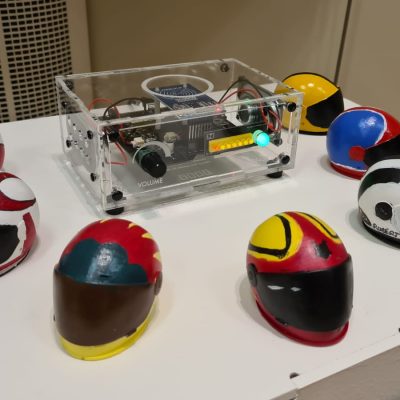By Michael McConway
Museum collections and professionals possess the potential to use their communication networks and community partnerships to empower young people to change the way they think about our environment. Solutions are not impermeable. Commitments made on paper in the past by heritage institutions may have addressed climate change, but in the long-term, busy museums struggle to implement them in an active, practical, budgeted format accessible to the wider public.
This article hopes to stem new ideas for engaging with museum audiences who are unaware of the impact of climate change on our communities, illustrating examples of best practice in the way museums across the UK use their collections and projects to tackle the climate crisis head on.
Empower Young People to Make a Contribution Through Outreach Projects
In 2018 the National Museum of Cardiff raised awareness about the mass of plastic pollutants being dumped on the beaches between Porthcawl and Ogmore by mobilising their Youth Forum to arrange beachcombing parties to clean up their local beaches. Museum professionals worked alongside young activists who were passionate about collecting the waste and protecting their coastline, and the Youth Forum hosted a short exhibition in the Museum’s marine galleries, dumping waste among the exhibits in order to provoke an emotional public reaction. This prompted regular visitors to the museum to consider how littering and dumping of waste can affect our ecosystems.
By engaging with young people from their local community, museums of all shapes and sizes can make a contribution to protecting habitats from waste dispersal and disturbances from harmful human intervention. When making plans for outreach projects, museums have the potential to evaluate the climate concerns that are affecting their local visitor base and make short-term, achievable goals to cause a change for the better.

Utilise Collections to Convey Powerful Messages
In August 2019 the Bristol Museum veiled 32 animals in their world wildlife gallery belonging to species under extreme risk of silent extinction. The exhibition was partly inspired by correspondence from a group of schoolchildren urging the museum to tell the story of a Bengal tiger in their collection, one of 39 tigers shot by a hunting party led by King George V in 1911. The correspondence highlighted that a generation of educated and socially aware young people were upset with the museum for not telling the story behind the hunting party, as an awareness of the history of prize culling exotic animals is necessary to understand the present extinction problems and take action.
The Extinction Voices exhibition aimed to shock, inform and inspire, with both positive and negative feedback offered by visitors. Toward the end of the exhibition period in November 2018, Malaysia lost its last Sumatran Rhino, demonstrating the silent extinction going on around us. The Bristol Museum were unafraid to make space for species conservation action based around their collections, challenging the cultures that had brought several of these rare species to their galleries in the past.
Progressive, forward thinking museums of the future with extensive natural history collections should begin to address the true stories behind the acquisition of many of the animal exhibits in their collections so that visitors can become the agents of changing how we protect endangered species, rather than continuing as passive viewers of the injustices human intervention brings to the natural world.
Blue Sky Thinking, a Patrick Goddard installation currently on display in the Ulster Museum in Belfast, is a thought-provoking example of how Museums can engage with artwork which makes a powerful statement on the climate emergency using their temporary exhibition spaces. The physical beauty of the 180 sculptured lead Parakeets is contrasted by the themes of migration and identity. The ring-necked parakeet are not an indigenous species to urban streetscapes of London, and the exhibition evokes the themes of global warming and climate change on migration.
Be Sustainable
The Horniman Museum in Forest Hill, London, has incorporated a strong social and ecological conscience into how it operates with the public. Coffee Cups, takeaway boxes, sandwich wrappers, and straws in the Horniman Museum Cafe have all been replaced by recyclable plant based materials – with coffee cups produced using recyclable and compostable sugar cane which can be used to fertilise the Museum gardens. No single-use plastic products are now available to purchase in their museum cafe or shop, with the introduction of water refill points for visitors to prevent the scattering of plastic water bottles into the Thames. Museums must convey a climate conservation message through their operations and commercial interactions with the public.
Consulting the Voices of Young People
10 year old Lillian took part in a creative disobedience day in October 2019 at the People’s History Museum. She linked her protest for climate justice to the Pankhurst sisters, the protesters at Peterloo in 1819 and the Rochdale Mill Workers who refused to use cotton picked by slaves in 1818.
Lillian is representative of the politically literate generation of young people who refract their political advocacy and action through the social history on display in museum galleries. The People’s History Museum blogspace is a collaborative area where the voices of young people have been championed by professionals who recognise the importance of consulting young people on the climate issues that matter to them.
Challenge Industrial Heritage Narratives
NMNI sites and visitor attractions, such as Titanic Belfast, portray our capital city as a centre of industry consuming fossil fuels during the Victorian and Edwardian eras through shipbuilding, linen mills, and tobacco works. The legacy that these industries have had on global warming has been demonstrated through research from the inter-governmental panel on Climate Change, which found that atmospheric CO2 levels have risen from 280 parts per million to 417 parts per million in the last 151 years due to increased industrial activities.
The Titanic burned over 600 tonnes of coal per day – why doesn’t our local tourist industry and National Museums NI reflect on the impact of the construction of leviathan vessels on the environment? Museums in Northern Ireland must continue to celebrate the industrial heritage and social conditions of the era, but much like the Bristol Museum, they must use that past to proactively educate young people about the effects of fossil fuel consumption on our climate.
Museums can commit to using their collections to make a change in how actively they pursue conservation action and climate preservation in their exhibitions and projects. It is up to initatives like Reimagine, Remake, Replay and Kids in Museums to continue supporting networks of young people to contribute their ideas on climate action.
This blog was written by RRR Core Participant Michael McConway as part of RRR’s Takeover Day 2021, an initiative created by Kids in Museums. To read more about Kids in Museums’ Takeover Day, visit their website: https://kidsinmuseums.org.uk/what-we-do/takeover-day/



